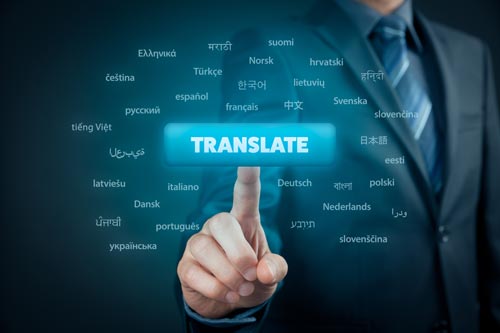
The Future of Translation: How AI is Changing the Industry
Understanding AI Translation and How It Works
What Is AI Translation?
AI translation refers to the use of artificial intelligence technologies, particularly machine learning and natural language processing (NLP), to automatically convert text or speech from one language to another. Unlike traditional rule-based systems, AI translation leverages vast datasets and algorithms to learn language structures, semantics, and context, making it increasingly accurate and efficient over time.
The core technology behind AI translation is neural machine translation (NMT), a method that uses artificial neural networks to predict the likelihood of a sequence of words, improving fluency and contextual relevance. This approach allows AI systems to understand idiomatic expressions, syntax, and tone far better than earlier translation models.
The Evolution of Machine Translation Technology
The field of machine translation has evolved dramatically over the last few decades. Early systems relied heavily on dictionaries and grammar rules, producing rigid and often inaccurate translations. The introduction of statistical machine translation (SMT) in the early 2000s marked a significant improvement, as it used probabilistic models based on bilingual corpora.
However, it wasn’t until the advent of deep learning and NMT in the mid-2010s that AI translation made a quantum leap. Platforms like Google Translate began producing outputs that were not only grammatically correct but also contextually appropriate. Today, AI systems are trained on terabytes of multilingual content, enabling them to produce human-like translations across a wide array of languages.
Key AI Translation Tools and Platforms in Use Today
Several AI-powered translation platforms have become industry benchmarks:
- Google Translate: Utilizes NMT and provides translations in over 100 languages.
- DeepL Translator: Known for its accuracy and nuance, especially in European languages.
- Amazon Translate: A cloud-based NMT service for developers and enterprises.
- Microsoft Translator: Offers real-time translation and integration into business tools like Teams and Outlook.
These tools are increasingly integrated into professional workflows, enterprise systems, and consumer applications, signaling their growing influence in the translation industry.
Benefits and Limitations of AI in Translation
How AI is Improving Translation Speed and Efficiency
One of the most compelling advantages of AI translation is speed. AI can process thousands of words in seconds, making it ideal for high-volume content like e-commerce listings, user-generated reviews, and support documentation. This has enabled businesses to localize their content at scale, enter new markets faster, and provide real-time multilingual customer support.
AI also brings consistency to terminology usage, which is critical in sectors like manufacturing, legal, and healthcare. Translation memory (TM) systems integrated with AI can ensure the same terms are translated identically across all documents, maintaining brand and regulatory consistency.
Accuracy Challenges: When AI Translation Falls Short
Despite its advancements, AI translation is not without flaws. Contextual misinterpretations remain a significant issue, especially with languages that have complex grammar or rely heavily on cultural nuances. For example, idiomatic expressions or region-specific references can easily be mistranslated, leading to confusion or even offense.
Moreover, AI struggles with:
- Polysemy: Words with multiple meanings (e.g., “bank”)
- Ambiguity: Sentences that require context to disambiguate
- Cultural Sensitivity: Subtle cues and connotations that vary by locale
These limitations highlight the risks of over-reliance on AI for critical communications, legal documents, or creative content where precision and tone are paramount.
Why Human Translators Are Still Essential in Certain Fields
Human translators bring cultural awareness, subject matter expertise, and emotional intelligence that AI cannot replicate. Fields such as legal, medical, financial, and literary translation demand a level of interpretation and discretion that machines cannot achieve alone.
For instance:
- Legal documents must reflect not only linguistic accuracy but also jurisdiction-specific terminologies.
- Medical translations must ensure clarity and compliance with international regulatory standards.
- Marketing materials must evoke specific emotions and maintain brand voice across cultures.
Professional linguists are also responsible for post-editing AI translations, ensuring quality control and compliance with client requirements. Their role is evolving into that of an editor, reviewer, and subject-matter expert, making human-machine collaboration the new standard in the industry.
The Future of AI in the Translation Industry
How AI Translation is Transforming Global Communication
AI translation is accelerating globalization by removing language as a barrier to communication. Businesses can now engage with customers, partners, and stakeholders worldwide without the need for extensive translation departments.
This democratization of language access has profound implications:
- Startups can scale internationally without large localization budgets.
- Multinational corporations can standardize communications across markets.
- Government agencies can communicate with multilingual populations more effectively.
Furthermore, AI is enabling real-time multilingual communication via speech translation apps, smart devices, and virtual assistants, reshaping how people interact across linguistic divides.
The Role of AI-Assisted Human Translators
As AI becomes more embedded in translation workflows, human translators are transitioning into hybrid roles that combine linguistic expertise with technological proficiency. These professionals:
- Perform post-editing of machine-generated translations
- Customize glossaries and translation memories
- Train AI models using domain-specific corpora
- Oversee quality assurance and localization strategy
This shift requires new skill sets, including familiarity with CAT tools, AI platforms, and localization software. In turn, it opens new career paths and opportunities for translators to specialize in high-value services like transcreation, linguistic validation, and multilingual SEO.
What to Expect from AI Translation in the Next Decade
Looking ahead, several trends will shape the trajectory of AI translation:
- Hyper-Personalization: AI will tailor translations to specific industries, audiences, and even individuals.
- Multimodal Translation: Integration of text, voice, video, and image translation will become seamless.
- Real-Time Collaboration: AI tools will support dynamic, real-time editing and collaboration across languages.
- Improved Context Awareness: Advances in contextual AI and large language models (LLMs) will reduce ambiguity and improve nuance.
- Ethical and Regulatory Oversight: As AI translation permeates sensitive domains, data privacy, fairness, and transparency will gain importance.
AI will not replace human translators but will instead augment their capabilities, allowing them to focus on higher-order tasks. Businesses that invest in this hybrid model will be better positioned to navigate global markets with agility and precision.
Partnering for Success in a New Era of Translation
AI translation is revolutionizing how we communicate, breaking down language barriers and enabling faster, more scalable multilingual solutions. However, the journey toward truly universal and contextually flawless translation still requires human insight, cultural intelligence, and quality assurance.
Enterprises that want to remain competitive in global markets must adopt a balanced approach—leveraging the speed and efficiency of AI while relying on experienced human linguists for accuracy, compliance, and tone.
At Etcetera Language Group, Inc., we embrace the future of AI-assisted translation. Our team combines state-of-the-art AI tools with deep linguistic expertise to deliver highly accurate, professionally presented translations tailored to your industry. With experience in dozens of languages and sectors, we ensure that your global communication is clear, culturally appropriate, and impactful.
Partner with Etcetera Language Group, Inc. today to elevate your translation strategy and to learn more about our document translation and desktop publishing services.
Let us help you communicate confidently and effectively across languages—powered by AI, perfected by people.
More...
Categorised in: Language Services





